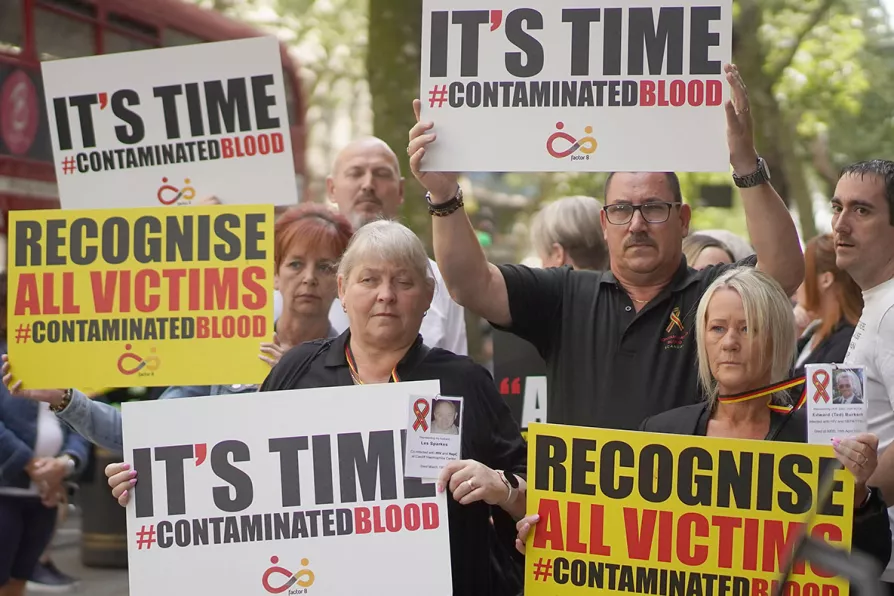Contaminated blood victims confused and angered over changes to compensation plan

 Campaigners, including many who are personally infected and affected by infected blood, gather in Westminster, London, July 26, 2024
Campaigners, including many who are personally infected and affected by infected blood, gather in Westminster, London, July 26, 2024
CONTAMINATED blood victims expressed confusion and anger after the government announced changes to a multibillion-pound compensation plan today.
Paymaster General and Cabinet Office Minister Nick Thomas-Symonds said survivors of the biggest treatment disaster in NHS history will get life-long support with up to £15,000 extra for those subjected to “unethical” research.
Payouts under the scheme will start by the end of the year for survivors and by next year for affected people such as family members under a second set of regulations.
Similar stories












